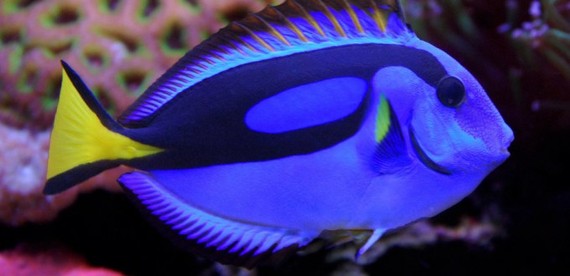Excited about the upcoming release of Finding Dory? You're not alone! Children and parents alike are already making plans to see the much-awaited sequel to Finding Nemo. If you're a real fan, chances are, you've considered buying a little clownfish (Nemo) or blue tang (Dory) for your own aquarium.
The release of Finding Nemo years ago resulted in an overwhelming and sudden demand for clownfish at pet stores and aquarium suppliers. Parents wanted to buy their children their very own Nemo, and who could blame them? They're incredible, beautiful, and fascinating fish. But they're also delicate and a bit challenging to care for.
How Finding Nemo decimated the clownfish population
The demand for clownfish spiked after the movie came out, and as the wild populations of clownfish started to dwindle, scientists warned that the sudden demand could have grave consequences for the species as a whole. And it did.
"Marine biologists say numbers of clownfish have fallen by 75 percent in some areas in the five years since the hit movie first came out."
-
, Telegraph UK
Experts expect the release of Finding Dory to have a similar, if not more devastating effect--the blue tang is notoriously difficult to properly care for in a saltwater aquarium, and experts agree that it's not a fish for beginners to start out with.
Why are 'Dory' fish a bad saltwater tank choice?
First, the blue tang gets larger than some aquarium fish, requiring a lot of space and bigger tanks. Second, it doesn't always play well with others, especially other blue tangs. Third, it has a special need for high levels of seaweed and algae in its diet. Finally, it is more susceptible to problems like lateral line disease, fin erosion, ich, and other skin parasites than many other fish.
Kevin Teadly, marine biologist in south Florida, explained in a phone interview:
"If parents go to purchase a fish solely based on its resemblance to a fictional character, chances are, they're not experienced saltwater aquarium owners. And if they're not experienced with owning large, saltwater aquariumsand non-tank raised fish, they're going to end up with dead fish and a deflated wallet."
That's a lose-lose situation.
But I still want a Dory fish!
Still want a Dory fish? Experts are acting preemptively this time around and recommending a wonderful alternative for fans that want a Dory look-alike fish, but don't want to risk damaging the future of the species.
"A 'Baby Dory' fish does exist--it's called a yellow-tail damsel. I've been in the aquarium industry for many years and you would be surprised how often I would hear "Look - a baby Dory!" - from a child pointing at the yellowtail damsel in a tank. It's a fish I've steered parents toward in the past when they've requested a Dory fish, and it's a great alternative. I'm concerned about the impact this increased demand will have on this fish and want to prevent as many unnecessary losses as possible.
Not only is the yellow-tail damsel much smaller than the blue tang, which can grow to more than a foot long, but it's also a very hardy fish. The yellow-tail damsel is from the less aggressive Chysiptera genus of damsels which are less aggressive and less territorial than most other damsels. With ablue tang, you're going to need a tank size of no less than 180 gallons, while yellowtail damsels can do well in 30 gallon tanks."
-Mark Valderrama,
expert
With a smaller, easier to care for alternative to the real Dory fish, we can potentially bypass a disaster like we accidentally created when Finding Nemo was released.
Blue tang are wonderful aquarium fish for fish experts and those who are willing to spend a lot of time learning about their new fish, but for those that are simply searching for a Dory look-alike, the yellowtail damsel will do the job just fine.
Now, has anyone seen my clownfish...?

